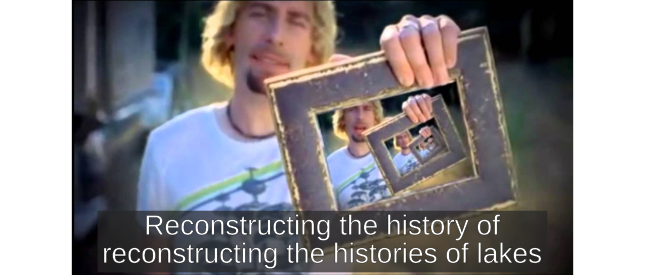“All have their worth and each contributes to the worth of the others” – John Ronald Reuel Tolkien
Our latest podcast begins a new multi-episode arc: A History of Paleolimnology, examining how many branches of science came together to produce our favourite sub-discipline.
Our deep dive into the roots of paleolimnology was inspired by John Smol’s lecture “A Brief History of Paleolimnology”, that we saw for the first time at the inaugural Ontario-Québec Paleolimnology Symposium. John has generously shared his slide deck with us, and we hope that delving into this material in a podcast format will allow additional details and tangents to be explored.
All histories require a starting point, but as paleolimnology is the “interdisciplinary science that reconstructs the paleoenvironments of inland waters”, identifying the point it emerged as a distinct scientific discipline is quite difficult. Logically, it must pre-date the establishment of a dedicated scientific society (the constitution of the International Paleolimnology Association was formally adopted in 2006), journal (the first issue of the Journal of Paleolimnology was released in 1988), or meeting (the first International Paleolimnology Symposium wash held in 1967 in Tihany, Hungary). If there is enough interest for all of these things, the subject must be older, but how much older?
At its core, paleolimnology is a sub-discipline of limnology interested in sedimentary processes. However, many other fields are also fundamental to modern paleolimnology (e.g. optics, taxonomy, statistics, etc.), each with their own development history and lots of cross-pollination. So, perhaps working backwards isn’t the best way to identify the beginning. Instead, lets jump all the way back to the Renaissance and skip through time highlighting key figures and contributions that were critical to the eventual development of paleolimnology.

The Scientific Revolution pushed against literal interpretations of the Bible as the Middle Ages drew to a close, and that is where we begin our list of key scientists and scientific contributions:
- Galileo Galilei: Championed heliocentrism (1610s), “the father of modern science.”
- Nicolas Steno: Pioneer in stratigraphy (1669), “law of superposition, principle of original horizontality, principle of lateral continuity.”
- Antonie van Leeuwenhoek: One of the first microbiologists, viewed “animalcules” using lenses of his own design (1670s).
- Isaac Newton: One of the most influential scientists of all time. Laid the foundations for classical mechanics (1687).
- Carl Linnaeus: Pioneered modern taxonomy with introduction of binomial nomenclature in Systema Naturae (1753).
- Antoine Lavoisier: The “father of modern chemistry” (1770s).
- James Hutton: The “father of modern geology”, developed the concept of geological time (1785).
- Charles Darwin: Theory of evolution, published On the Origin of Species (1859).
- François-Alphonse Forel: Established the field of Limnology with his work on Lake Geneva (1890s/1900s).
- Henri Becquerel: Discovered radioactivity (1896).
- S. P. L. Sørensen: Developed the concept of pH (1909-1924).
- The scientific society dedicated to the study of all aspects of inland waters, the International Society of Limnology (Societas Internationalis Limnologiae) was founded in 1922.
- G. Evelyn Hutchinson: The “father of modern ecology”, published Treatise on Limnology (1957).
The work of these scientists (and many more) laid the foundations for paleolimnology. Next time we will continue with a look at how these discoveries and concepts were put together by early “paleolimnologists.”


